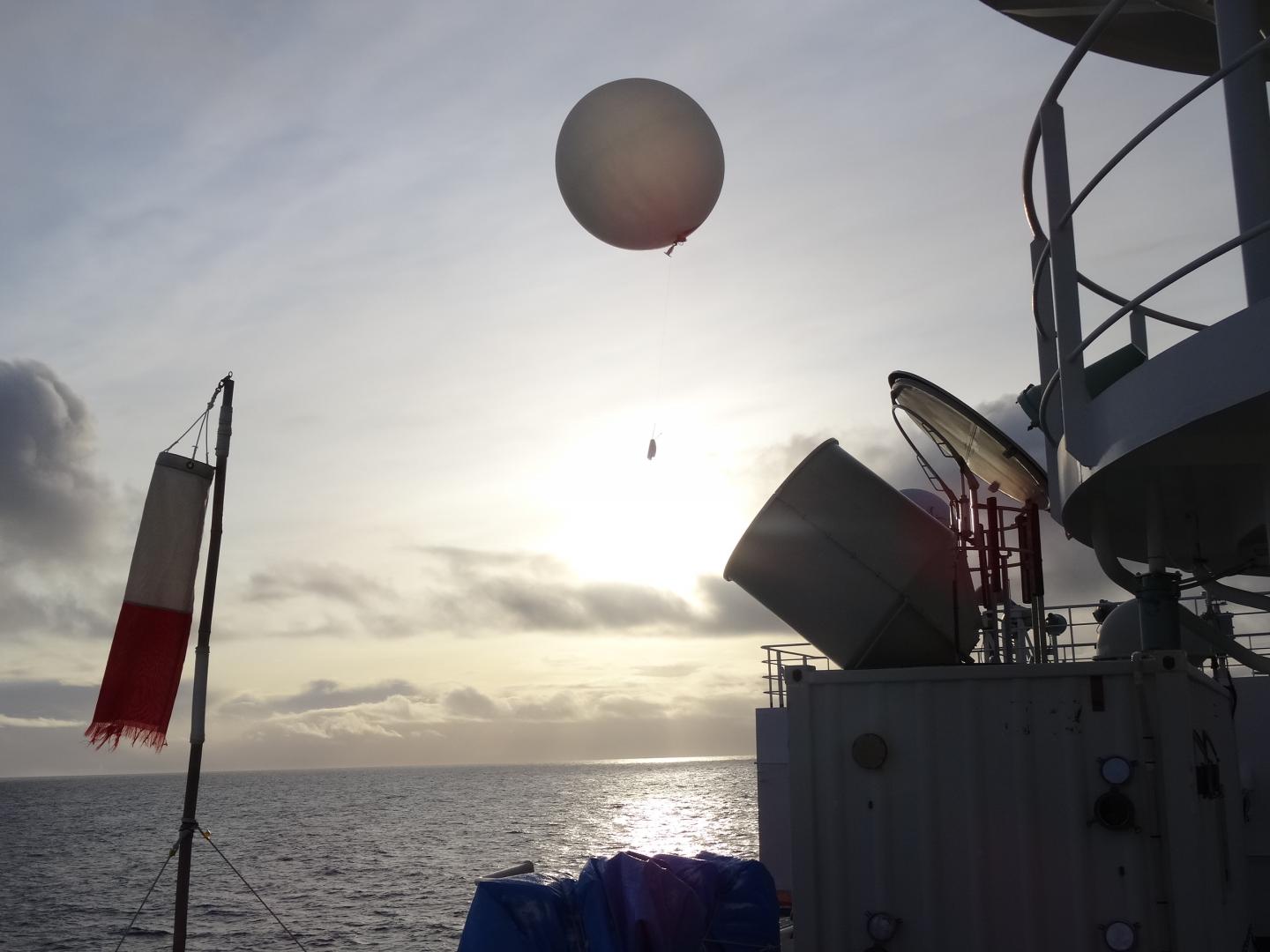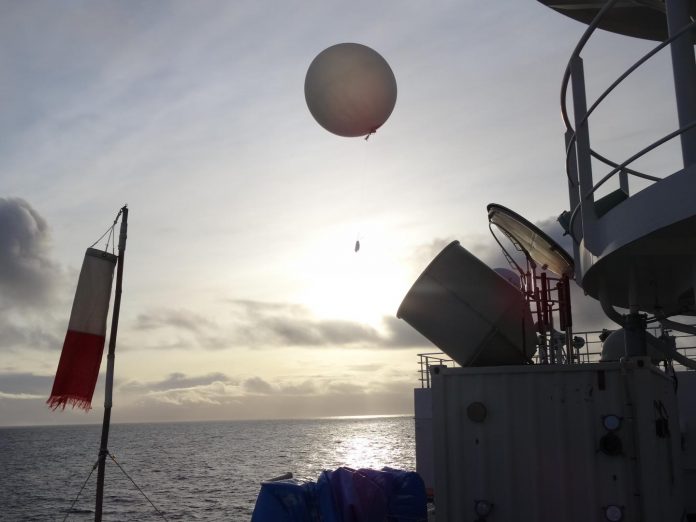
Photo: Releasing balloon with radio sonde automatically, over the Arctic Ocean
view more
Credit Image: Jun Inoue (NIPR)
In 2017, Category 5 Hurricane Irma devastated islands of the Lesser and Greater Antilles before turning northward and ultimately making landfall in southwestern Florida. Forecasting the timing and position of that northward turn was critical for Floridians to prepare for the storm’s impact, but the uncertainty surrounding prediction of the upper-level trough that would steer the turn made this difficult. Collecting additional meteorological data, including measurements from locations as distant as the Arctic, could help meteorologists forecast the tracks of future tropical cyclones like Irma.
In a new study published in the journal Atmosphere, a research team led by the Kitami Institute of Technology compared the accuracy of operational medium-range ensemble forecasts for 29 Atlantic hurricanes from 2007 to 2019, with a focus on hurricanes that moved northward in response to upper-level atmospheric circulation over the mid-latitudes and approached the United States.
Although hurricane track forecasting has significantly improved in recent decades, there are still significant errors in some cases, and the consequences can be severe. In particular, uncertainty regarding the paths of upper-level troughs with strong winds in the mid-latitudes can lead to greater uncertainty when they influence the tracks of tropical cyclones. The research team found that in cases of hurricanes steered by upper-level troughs, forecasting errors of the hurricanes’ central positions were larger than those in cases not influenced by upper-level troughs.
Lead author Kazutoshi Sato explains, “During the forecast period Hurricane Irma in 2017, there was large meandering of the jet stream over the North Pacific and North Atlantic, which introduced large errors in the forecasts. When we included additional radiosonde observation data from the Research Vessel Mirai collected in the Arctic in the late summer of 2017, the error and ensemble spread of the upper-level trough at the initial time of forecast were improved, which increased the accuracy of the track forecast for Irma.”
The researchers also investigated the effect of including additional dropsonde data collected by the United States Air Force Reserve Command and the Aircraft Operations Center of the National Oceanic and Atmospheric Administration over the Atlantic Ocean near Hurricane Irma in 2017. Hurricane forecast accuracy was improved both by dropsonde measurements near the hurricanes and by radiosonde observations over the Arctic Ocean.
According to co-author Jun Inoue, an associate professor of National Institute of Polar Research, “Our findings show that developing a more efficient observation system over the higher latitudes will be greatly beneficial to tropical cyclone track forecasting over the mid-latitudes, which will help mitigate the human casualties and socioeconomic losses caused by these storms.”
###
The article, “Performance of Forecasts of Hurricanes with and without Upper-Level Troughs over the Mid-Latitudes,” was published in Atmosphere at DOI: 10.3390/atmos11070702.
About National Institute of Polar Research (NIPR)
The NIPR engages in comprehensive research via observation stations in Arctic and Antarctica. As a member of the Research Organization of Information and Systems (ROIS), the NIPR provides researchers throughout Japan with infrastructure support for Arctic and Antarctic observations, plans and implements Japan’s Antarctic observation projects, and conducts Arctic researches of various scientific fields such as the atmosphere, ice sheets, the ecosystem, the upper atmosphere, the aurora and the Earth’s magnetic field. In addition to the research projects, the NIPR also organizes the Japanese Antarctic Research Expedition and manages samples and data obtained during such expeditions and projects. As a core institution in researches of the polar regions, the NIPR also offers graduate students with a global perspective on originality through its doctoral program. For more information about the NIPR, please visit: https:/
About the Research Organization of Information and Systems (ROIS)
The Research Organization of Information and Systems (ROIS) is a parent organization of four national institutes (National Institute of Polar Research, National Institute of Informatics, the Institute of Statistical Mathematics and National Institute of Genetics) and the Joint Support-Center for Data Science Research. It is ROIS’s mission to promote integrated, cutting-edge research that goes beyond the barriers of these institutions, in addition to facilitating their research activities, as members of inter-university research institutes.
TDnews (tunisiesoir.com)















